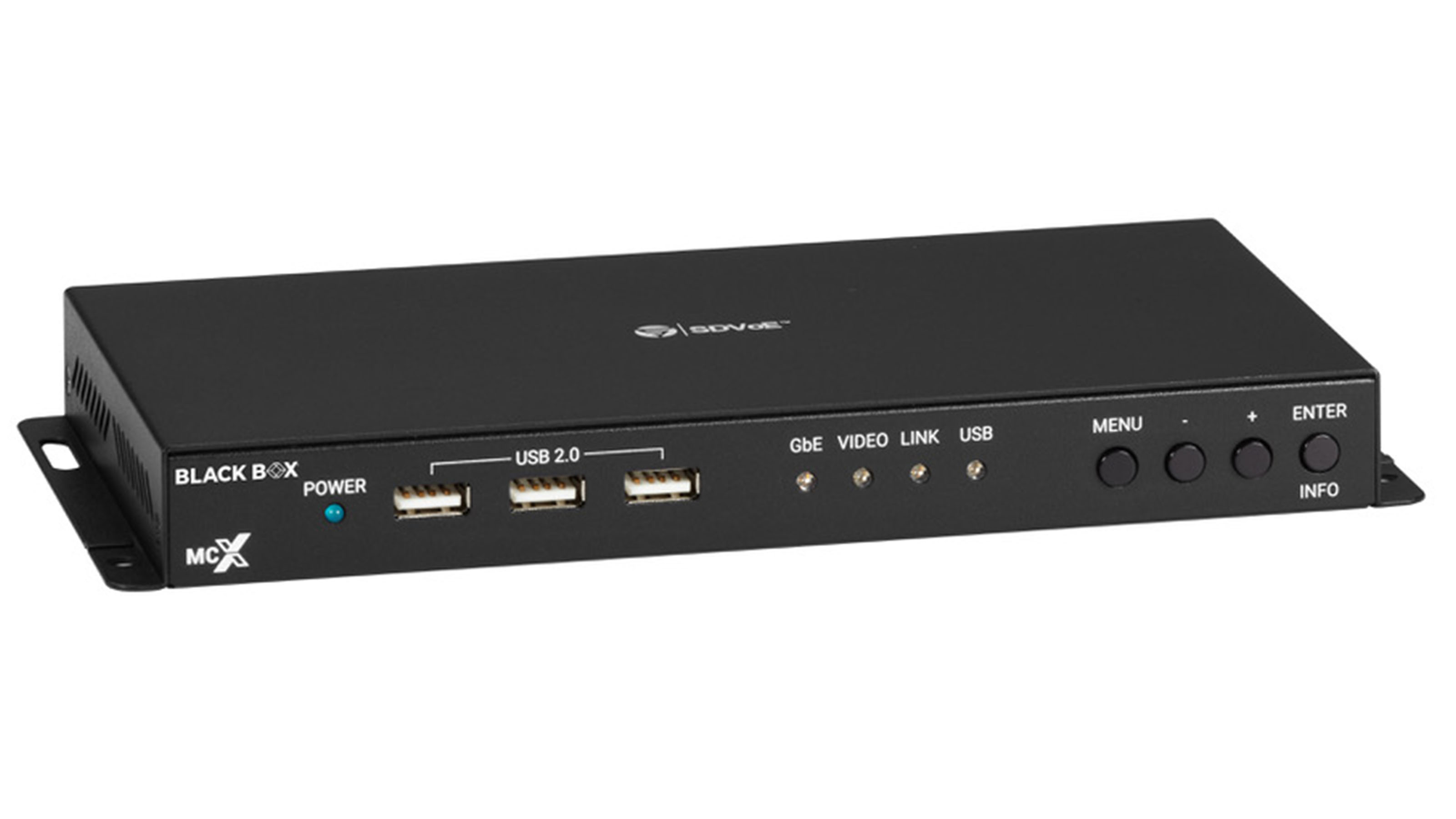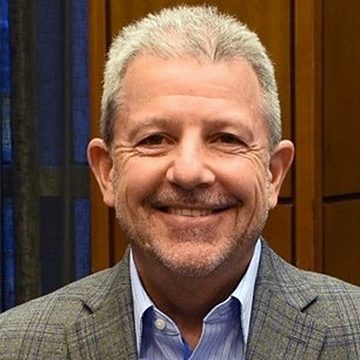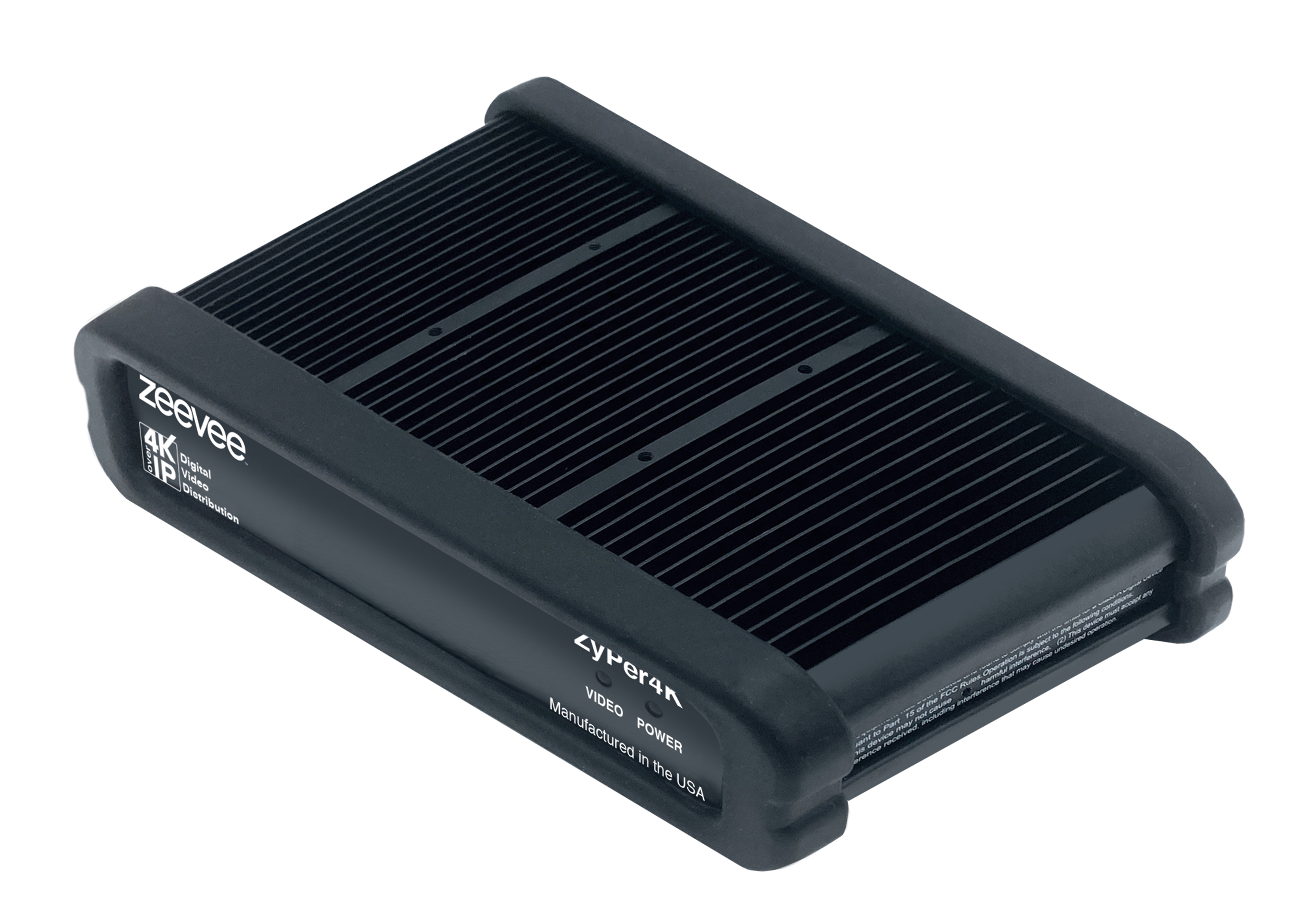One Standard to Rule Them All?
With a common chipset and 10GigE transport, alliance members make the case for SDVoE.

According to the application and network intelligence company Sandvine, streamed video usage grew 24% in 2022 and accounts for 65% of all internet traffic. This is why streaming video distributors need access to a video streaming standard that is reliable, interoperable among many AV equipment platforms, and uncompressed for 4K traffic to maximize viewing quality.

Software Defined Video-over-Ethernet (SDVoE) is a proven, reliable AV-over-IP standard that runs on commercial-off-the-shelf 10GigE networks. It is compatible with technology made by major AV equipment manufacturers and vendors including NETGEAR, ZeeVee, Christie, Semtech, Black Box, and IDKAV—all of which banded together to form the nonprofit SDVoE Alliance consortium in 2017. Today, it has more than 55 members, with approximately 800 SDVoE products in their combined catalogs.
[SDVoE Alliance's Record Year: New Members and Professional Certifications]
“SDVoE is different from other AVoIP video standards because SDVoE is built around a chipset that is common to all SDVoE devices,” said Justin Kennington, president of the SDVoE Alliance. “This means interoperability is built into this standard from the start.”
The Key Is Interoperability
The creation of the SDVoE standard addresses one of the AV user community’s biggest complaints, namely that proprietary AV equipment made by Vendor A won’t interoperate with AV equipment made by Vendor B. Such restrictions limited the choices of users when it came to buying new AV equipment, including combining gear from various vendors to reuse legacy equipment and get the best prices for new purchases.

Before Windows-based personal computers became ubiquitous, this was something AV vendors could get away with, but no longer. “You can't go to the IT director and say, ‘Well, we have to buy Dell printers because we have Dell laptops, and as you know, Dell laptops only work with Dell printers,'” Kennington said. “That's an insane conversation, and yet that used to be the conversation in AV. If I've got a specific AV vendor’s system today and I want to expand it, I need to buy from the same AV vendor tomorrow. That's how AV has done business in the past. But I don't think this approach works anymore in an IT-centric world, and neither do the members of the SDVoE Alliance.”

In fact, the clear, compelling need for an interoperable AVoIP standard is what galvanized a handful of manufacturers and others to put aside their proprietary pasts and come together for the AV industry’s common good. “The founding members of the SDVoE Alliance all believed that we have to ultimately change how we do business to stay competitive,” said Kennington. “Although changing their way of doing things was scary—it feels safe to say, ‘You can only use my products with my products’—they all knew what the AV industry was facing thanks to PCs and how we had to start looking at the world.”
A daily selection of the top stories for AV integrators, resellers and consultants. Sign up below.
Kennington’s explanation is echoed by Bob Michaels, CEO of ZeeVee. “Our involvement with the core technology goes back to 2014 when we were looking to move our legacy products, which were all RF-based, into AVoIP,” he said. “We became a founding member of the SDVoE Alliance as a result of the experience we gained over those earlier years, and because we truly believe in the technology.”

“SDVoE was one of those places where we saw a kinship in needing some kind of standardization in the industry for how AV is moved over an IP network,” added John Henkel, NETGEAR's director of SMB marketing. “With SDVoE, our customers realize that they can use endpoints from any manufacturer depending on their need, and they can mix-and-match in different rooms if that's the way it works best for them. All kinds of SDVoE signals can come from various vendors’ equipment and then run through a simple NETGEAR switch and it's all going to work reliably.”
Other Advantages
SDVoE’s interoperable design delivers tangible benefits to AV vendors, content providers, signal distributors, and end users. The technology's use of 10GigE networks is another big benefit in the emerging world of 4K video.
“Our philosophy is to use as little compression as needed to transport signals,” Kennington said. “If your video signal is less than 10 gigs per second, we don't even compress it. So, a 4K 30fps signal is 6 Gbps of raw video data: We just transmit that as a 6 Gbps stream on our network.”
“SDVoE was one of those places where we saw a kinship in needing some kind of standardization in the industry for how AV is moved over an IP network.”
John Henkel, NETGEAR
Of course, there are larger video data streams—for example, 4K 60fps works out to 12 Gbps of raw data, which won’t fit into a 10 Gbps pipe. “That's when we turn on our very lightweight and usually lossless compression, which will squeeze it down to 9 Gbps,” said Kennington. “The most bandwidth that we ever consume for a video stream is 9 Gbps, because we want to leave that last gigabit available to support data traffic.”
As for signal latency? It can occur when video is streamed using the SDVoE standard, but latency can occur no matter what standard is being used. “Everything has latency: If you and I are standing in a room six feet from one another talking to one another, there is latency in the speed of sound,” Kennington observed. “The real issue is whether or not this latency is detectable by the user.

"In SDVoE, the latency is the same that you would experience going through a matrix switch, which is the latency of a few memory buffers in the line. If SDVoE compression is turned on, that adds five video lines of latency. So, for a 4K60 video signal, with compression turned on, our latency is a fixed 117 microseconds. That’s 0.117 milliseconds.”
Then there’s power savings. SDVoE runs on ASIC (application-specific integrated circuit) chipsets, which have been designed to support the SDVoE standard. As such, they use up to 70% less electricity than an FPGA (field-programmable gate array)—a common architectural choice for other AVoIP products—doing the same job. This reduced power can save operators serious money when hundreds or even thousands of SDVoE devices are in use.
“ASIC technology is at our core,” said Kennington. “Our approach to AV-over-IP is more sustainable, which is great to think about in big green/save-the-planet terms. Saving electricity means cutting emissions and reducing your carbon footprint and all that, and it's also saving a lot of money for the end customer.”
James Careless is an award-winning freelance journalist with extensive experience in audio-visual equipment, AV system design, and AV integration. His credits include numerous articles for Systems Contractor News, AV Technology, Radio World, and TV Tech, among others. Careless comes from a broadcasting background, with credits at CBC Radio, NPR, and NBC News. He currently co-produces/co-hosts the CDR Radio podcast, which covers the Canadian defense industry. Careless is a two-time winner of the PBI Media Award for Excellence.

